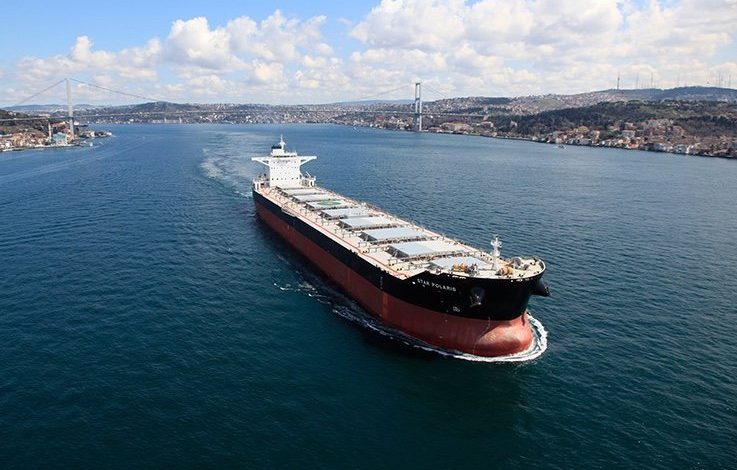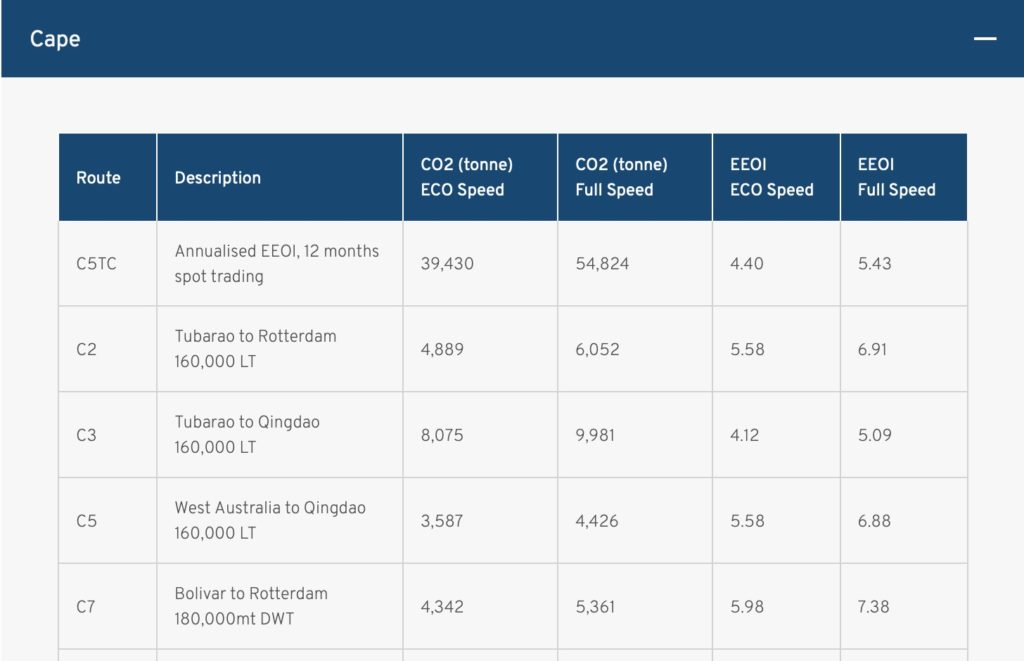Baltic Exchange releases important emissions data for main dry bulk routes

The Baltic Exchange has moved to provide a hugely valuable missing link that shipping will need on its path towards decarbonisation.
The London institution has calculated a set of indicative CO2 emissions figures and Energy Efficiency Operating Indicator (EEOI) reference values. Initially these cover the standard Baltic vessels trading on the various dry bulk routes.
With new International Maritime Organization rules on energy efficiency coming in over the next couple of years, shipping – or at least the dry bulk sector – will now have access to a market-based benchmark using real emission data instead of theoretical models as a vital compliance tool.
“By understanding the variability in operating efficiencies across routes and size classes, owners and charterers will be able to take practical steps to minimise their carbon footprint,” the Baltic Exchange stated in a release.
Currently, whilst vessel owners and operators may have access to such information on their own fleets, a lack of available reference data makes market level comparisons more challenging.
For each route a calculation of total CO2 emissions based on vessels travelling at both full and eco speed has been made as well as EEOI values.
The EEOI is one of a range of measures which the IMO has endorsed to support and measure the shipping industry’s progress towards its carbon reduction goals and provides insight into a vessel’s efficiency at sea. The EEOI enables operators to measure the fuel efficiency of a ship in operation and to gauge the effect of any changes in operation, such as improved voyage planning or more frequent propeller cleaning, or introduction of technical measures such as waste heat recovery systems or a new propeller. An annualised, weighted-average portfolio level calculation of the EEOI serves as the primary metric used by the Sea Cargo Charter (SCC) to track organisational alignment to IMO decarbonisation trajectories.
At this stage, these figures have been calculated based on typical vessel and voyage characteristics. Baltic Exchange members are being encouraged to provide feedback and to provide their own findings and operating performance which the Baltic can then use to validate, maintain and update the index EEOI values.
By way of an example of how much capes are performing CO2 wise on key routes according to the new data from the Baltic Exchange, Splash has pasted in the below information.

